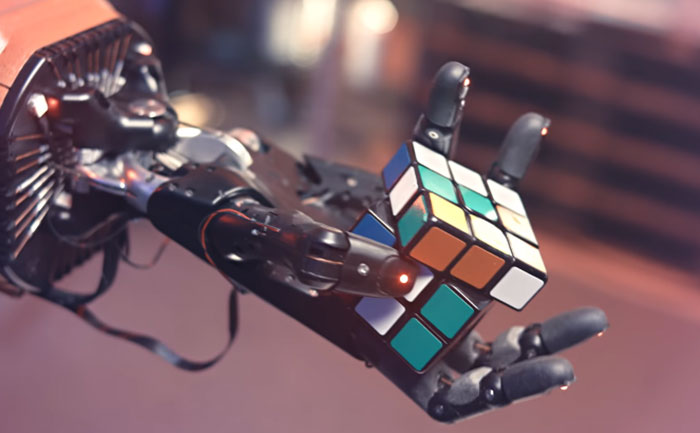- Sponsored -
OpenAI robot solves Rubik’s Cube one-handed
Dactyl can solve a Rubik's cube in four minutes

OpenAI, an artificial intelligence research organization, has used computer simulation to teach a robot to solve a Rubik’s cube one-handed. Dactyl, a robotic humanoid hand developed last year, learned how to solve the Rubik’ cube, running through routines that would take a human years to complete.The cube was modified to help the machine overcome visibility disadvantages.
- Sponsored -
The feat speaks to the robot’s dexterity and demonstrates how far robotics has progressed. OpenAI’s software allows Dactyl to learn new tasks with virtual simulations before being presented with real, physical challenge to concur.
It generally takes Dactyl around four minutes to complete the task. This isn’t the first instance of a machine solving the Rubik’s cube. MIT engineers developed a machine in March 2018 that managed to solve the cube in 0.38 seconds.
“Plenty of robots can solve Rubik’s cubes very fast. The important difference between what they did there and what we’re doing here is that those robots are very purpose-built,” says Peter Welinder, research scientist and robotics lead at OpenAI. “Obviously there’s no way you can use the same robot or same approach to perform another task. The robotics team at OpenAI have very different ambitions. We’re trying to build a general purpose robot. Similar to how humans and how our human hands can do a lot of things, not just a specific task, we’re trying to build something that is much more general in its scope.”
While the other robots were built for one specific task, Dactyl is being developed as a self-learning robotic hand that has a near human approach to tasks solving. It’s being trained to replicate the instinctive use of hand mirroring that of a human child. OpenAI hopes that these baby steps could help develop humanoid robots that can operate with in a society in various capacities.
ALSO READ: Porsche And Boeing Team Up To Develop An Electric ‘Flying Car’
- Sponsored -
